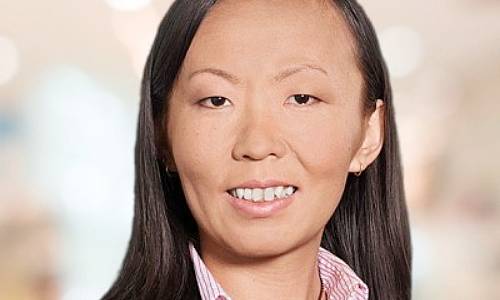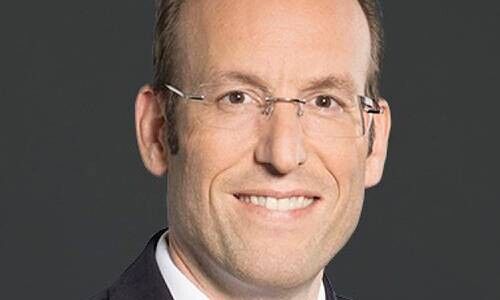Eqitron: Start Up with Former Vontobel Fund Managers Relies on AI
Three financial professionals who knew each other at the Swiss investment house bridge the gap between quant and thematic funds by using AI. finews.com talked with co-founder Daniel Seiler.
The things that drive Daniel Seiler and his colleagues are pretty contradictory. Seiler is a quant who has relied on market data and algorithms for most of his career.
However, quantitative-based funds are hard for investors to instinctively grasp and they also elicit little more than blank stares from the general public. That is in complete contrast to thematic investing, something that has turned out to be a perennial favorite for the asset management industry as a whole. Morningstar data shows that about $800 billion was invested in thematic funds in 2022 and that the annual growth rates for them regularly reach double-digit percentages.
Hard to See
Seiler and his business partners want to use that kind of momentum to help get their own newly founded venture Eqitron up to speed. But it isn't all that easy. «Unhappily, a quantitative investor has very little in common with thematic investment», the market professional says when being interviewed. «The tools simply aren't there. The appearance and disappearance of investment themes is hard to capture in numbers», Seiler says.
Thematic funds have another problem. It takes a very long time for the market to recognize a lucrative trend. And by the time a fund is constructed around one, valuations have usually increased significantly. Most of the short-term potential disappears into thin air and the only thing remaining is a long-term bet on a specific subject.
Bridge Building
Seiler says: «The biggest problem in thematic investment has been timing. That is where most of the returns get lost, given that the specifics of each theme usually get overlooked in the investment process.» As a result, many products turn out mixed results.
He and his Eqitron co-founders think they have found a better way. They don't just want to build a bridge between quants and thematic, they want to create an entirely new approach combining both. According to them, that is made possible by generative AI and so-called Large Language Models (LLM).
Private Market Data
Both technologies help capture themes quantitatively, Seiler says, allowing them to be analyzed. That leads to a qualitatively superior product that investors can easily understand. «The combination is very attractive for asset managers.» AI and LLM should help Eqitron filter out themes from large pools of data that the market isn't even aware of yet. The start-up uses information from the private investment sector that most market players rarely have access to.
«We use our Generative Investment Process (GIP) to discover themes and companies that exemplify these themes and trends,», is how Eqitron describes its business model in investor disclosures. The process continually identifies investment themes and their expected market impact. The promise: «We uncover themes before they are fully acknowledged by the market and priced in.»

(Image: Linkedin)
Turbulent Past
That gives the company a clear advantage when it comes to speed and flexibility vis a vis traditional asset managers, Eqitron states. «On average, we target a return of 4 to 6 percent above that of the general market», Seiler maintains.
That might sound like wishful thinking. But three veterans are behind the new approach, and none of them have to prove anything to anyone anymore in the industry. Seiler and his co-founder Yun Bai (pictured above) worked for Swiss fund boutique Vescore for many years, a business with a turbulent past. It was first bought by the former Raiffeisen subsidiary Notenstein La Roche, before being subsequently swallowed up by Vontobel.
Asset Management Head
Yun and Seiler worked together in their last years at Vontobel before heading off on their own. Seiler left the investment house in the autumn of 2023, at a time when its fund management business was coping with billions in outflows. It is a trend that has continued and which has now forced Vontobel to cut costs, something finews.com previously reported on.
A third key person, also once part of the Vontobel crew, is also heavily involved. The former head of the bank's asset management business, Axel Schwarzer (image below). Under his leadership, the business grew rapidly, becoming the most important part of the Zurich-based bank's business. All three are now working to grow Equitron.

(Image: Vontobel)
Mountains of Work
Right now, that all means mountains of work face them. The company developed GIP on its own and programmed the inputs for AI and LLM themselves, some of it from using open source intelligence. «that is because LLM typically works with billions or even trillions of variables, and getting estimates from them can become extremely expensive», the start up's founder says. Only specialized companies with the necessary financial means and data can train the models themselves.
Training the core module for specialist uses is not the important thing either. The added value doesn't come from a generic understanding of language and logic, Seiler maintains. «It is much more how you combine the core understanding with specific knowledge from a particular field. The second step is to develop a domain-specific understanding on its own, that is where the differentiation lies.»
License Application
You can imagine the whole thing as a brain where the inner core represents general logic and the outer core specific knowledge of a certain subject, Seiler says. «In our case that would be the understanding of investment activity.» As part of its growth strategy, Eqitron will be applying for a Finma asset management license as quickly as possible. At the same time, the partners have to worry about having the necessary financial means to expand infrastructure and its range of business activity.
They are looking outside the company for those things, Seiler says. «We are currently in the phase of looking for strategic investors to help us achieve our ambitious growth targets.»






















